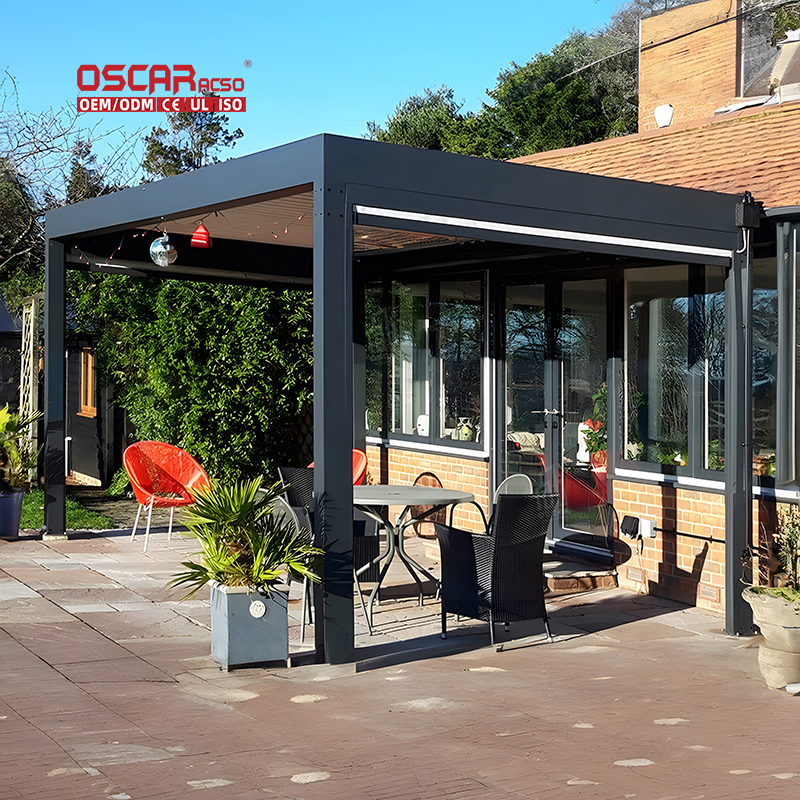Extension Pergola, Transform Your Home with Seamless Outdoor Living
Imagine effortlessly flowing from your cozy living room into a shaded, stylish outdoor oasis ☀️🌿. That’s the magic an ...
🔍 What Exactly is an Extension Pergola?
🏡 Unveiling the Types of Extension Pergolas
- •
Traditional Attached Pergola: This is the classic design with an open-lattice roof supported by posts on one side and attached to your house on the other. It’s perfect for dappled sunlight and supporting climbing vines like wisteria or clematis . - •
Solid Roof or Louvered Pergola: For those seeking more protection from the elements, a solid roof (like polycarbonate panels) or a modern louvered roof is ideal. Louvered systems, like those from StruXure, allow you to adjust the rafters to control sunlight and ventilation or completely close them to keep rain out ☔️. - •
Retractable Awning Pergola: A more flexible option featuring a retractable fabric canopy. You can extend it for full shade on hot days or retract it to stargaze at night 🌌. - •
Gabled or Fly-Over Roof: For a more dramatic architectural statement, a gabled roof offers a peaked design that enhances airflow and light. A ‘fly-over’ design perches above the gutter line, perfect for maximizing light and space in smaller areas .
✨ Key Materials: Balancing Beauty & Brawn
- •
Powder-Coated Aluminum: My personal top recommendation for a modern, low-maintenance home. It’s incredibly durable, rust-resistant, and won’t warp or crack. The powder-coated finish comes in various colors and requires only an occasional rinse with soapy water to look new . - •
Vinyl (PVC): A budget-friendly and ultra-low-maintenance option. It won’t rot, peel, or require painting. However, it can lack the natural warmth and strength of other materials and may not be suitable for supporting heavy loads . - •
Wood (Pressure-Treated or Cedar): The classic choice for a traditional, natural look. Woods like cedar have a beautiful grain and natural resistance to insects and decay. However, they require annual maintenance like staining or sealing to prevent weathering, cracking, or graying . - •
Steel: If you need maximum strength for a large span or to support heavy plants, steel is incredibly robust. It usually requires a galvanized or powder-coated finish to prevent rust .
🚀 Smart Features for the Ultimate Outdoor Room
- •
Motorized Louvers: The pinnacle of pergola tech! Systems like StruXure’s Pergola X feature motorized louvers you can adjust with a remote, app, or even voice command. They adapt to weather in real-time, letting you fine-tune your comfort 🔧. - •
Integrated Lighting & Fans: Low-voltage LED lights embedded in the structure create a magical ambiance for evening gatherings. For hot climates, a ceiling fan is a game-changer, keeping the air moving and bugs away 💡🌀. - •
Retractable Shades & Screens: Add privacy curtains or zip-down solar shades to control glare. For a bug-free experience, integrated motorized insect screens are a worthwhile investment . - •
Automation & Smart Home Integration: Sync your pergola with your smart home system. Imagine your louvers closing automatically if it starts to rain while you’re away 🌧️.
💡 Design Inspiration & Pro Tips
- •
Define Its Primary Purpose: Will it be an outdoor kitchen for grilling? A dining area for family meals? Or a cozy lounge for relaxing? Your answer will guide the size, layout, and features you need . - •
Match Your Home’s Style: A modern aluminum pergola might look out of place on a rustic cottage. Choose a design and material that complement your home’s existing exterior for a cohesive look . - •
Consider the Flow: How will you move from the indoors to the pergola? Large sliding or French doors create the most seamless and inviting connection . - •
Don’t Forget the Flooring: Tie the space together with durable outdoor flooring. Popular choices include stone pavers, composite decking, or a stained concrete patio . - •
Add Greenery: Incorporate potted plants, hanging baskets, or train climbing vines to soften the structure and enhance the natural oasis feel 🌸.
⚠️ Crucial Considerations: Permits & Professional Help
- •
Permits & Regulations: Most localities require a building permit for attaching a structure to your house. Regulations cover roof load, wind shear, and footings. Your contractor will usually handle this, but it’s crucial to check . - •
DIY vs. Pro Installation: A simple kit might be DIY-friendly, but for complex designs, motorized features, or ensuring it’s perfectly secure, hiring a professional is highly recommended. They ensure everything is structurally sound, water-tight, and built to code . - •
The Investment: Costs vary widely based on size, materials, and features. A basic wood structure might start around a few thousand dollars, while a large, automated aluminum system can be a significant investment that also adds substantial value to your property .
.jpg)

.jpg)
.jpg)
.jpg)

